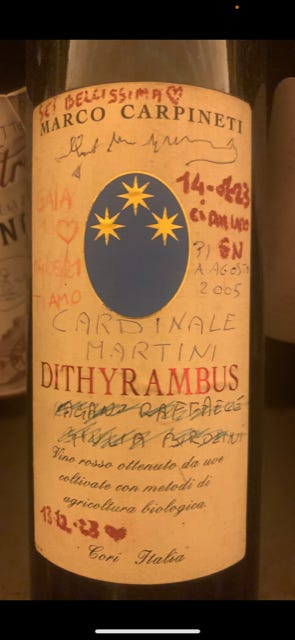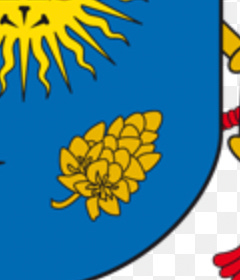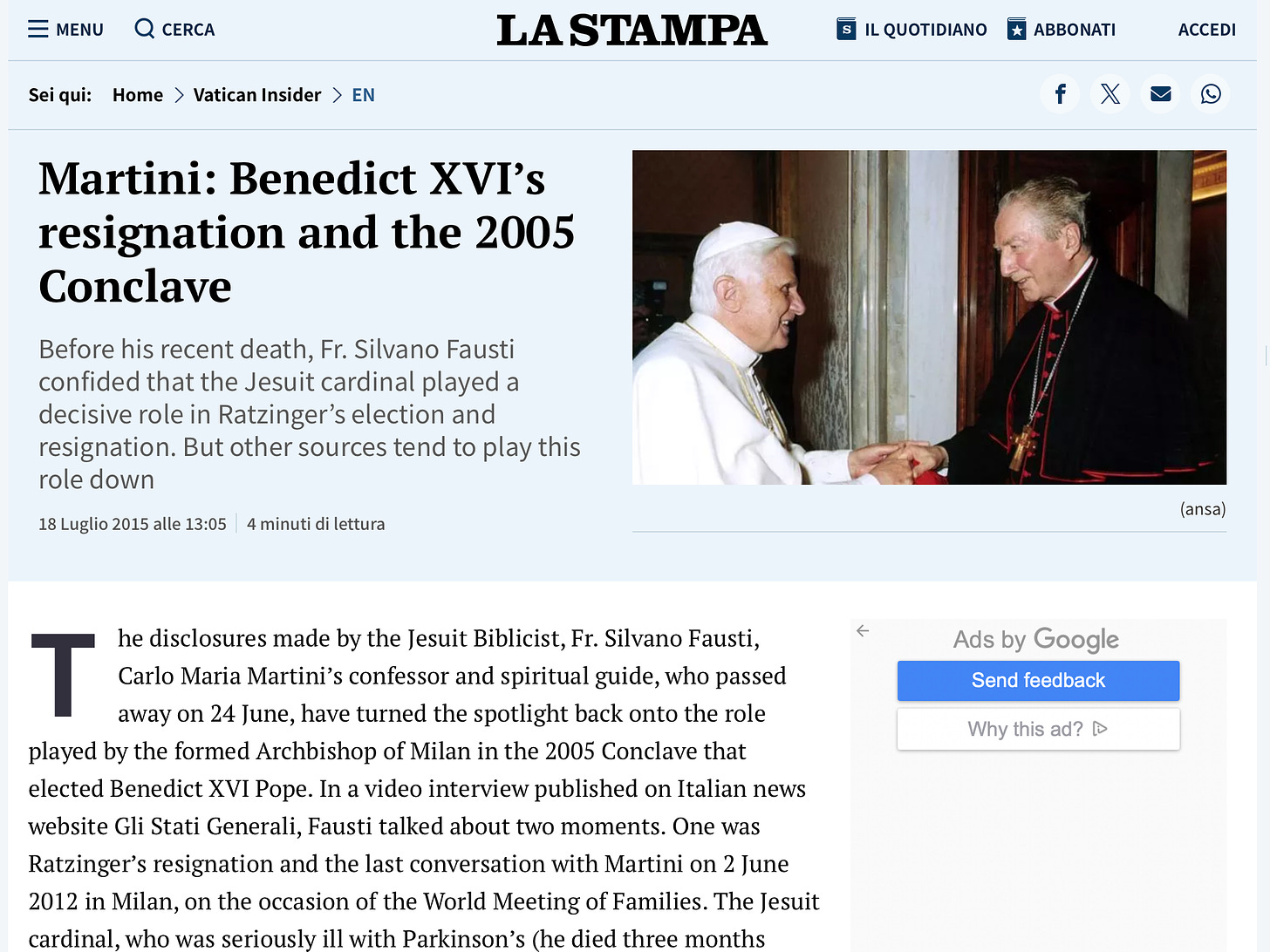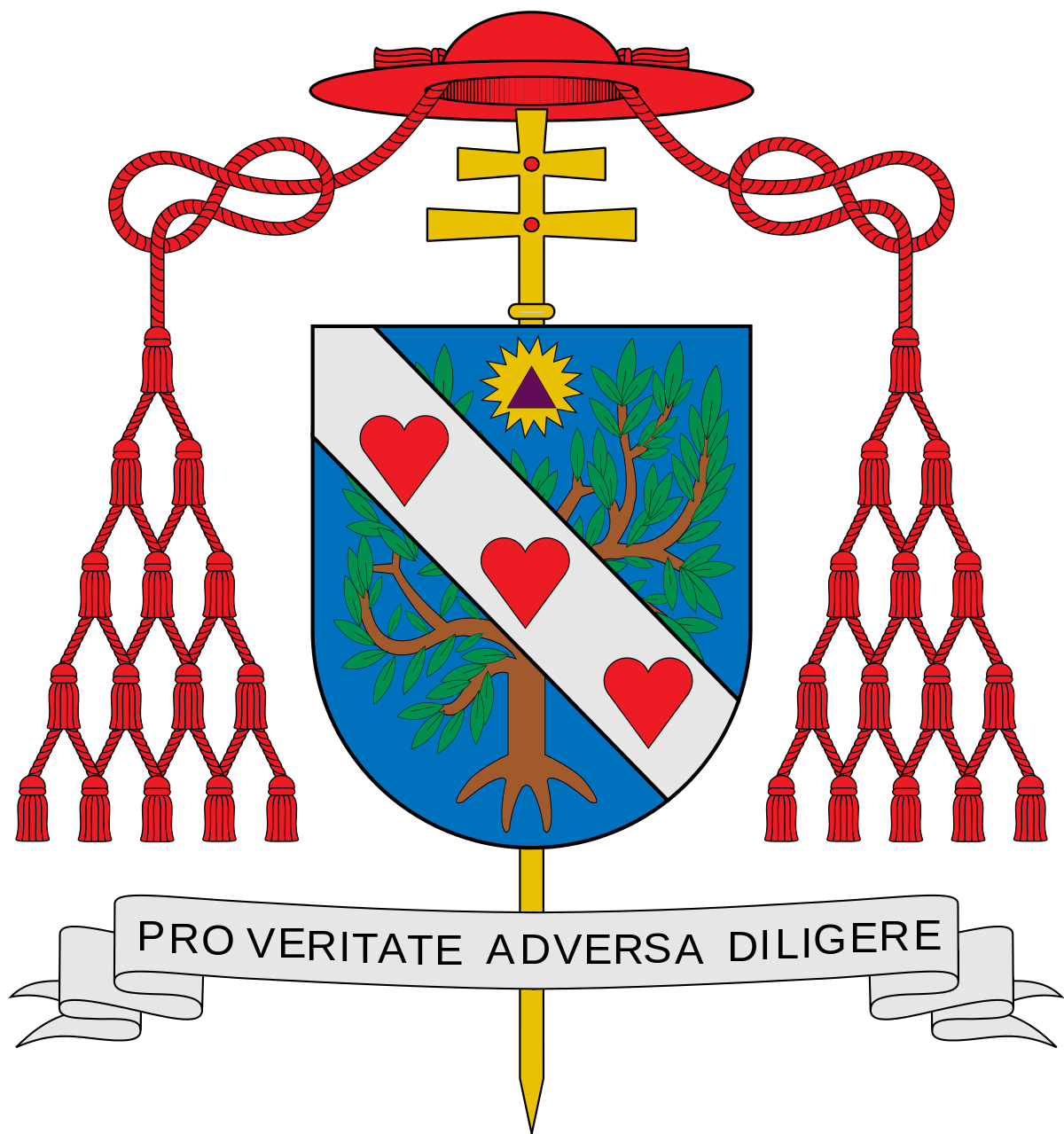Discover more from Pope Head Post
A couple of months ago I reported on the fire that broke out in Castel Gandolfo, the historic summer residence of the Popes.
Read the original post if you have not already.
I realized after writing that article that I had strangely never been to Castel Gandolfo. Last Saturday the opportunity presented itself, and I figured it was as good a time as any.
When a man begins to turn an eye to the strange, to focus on the peculiarities of existence, coincidence begins to coil around his countenance and haunt his periphery. When you take a gander into the weird, the weird takes a gander into you.
I will keep this article short and to the point.
The first synchronicity struck at lunch.
We arrived at Castel Gandolfo a little after noon with reservations at a historic restaurant in the town. The restaurant in question is a famous one and is no stranger to big names. It is close to the actual papal palace and has a beautiful view of the lake. It also has an expansive wine cellar that one of my friends claimed was even better than the food. After drinking our fair share of wine and marveling at the lake, we endeavored downstairs to explore the tunnels he had been raving about. I soon discovered his remarks were not exaggerated, the complex was massive, and if it wasn’t for the bottles lining the walls you could be forgiven for thinking that you had stumbled into the Catacombs of Calixtus. “Or Catacombs of Dionysus,” remarked my good friend- a comment that would ring even truer upon further reflection.
But there was only one bottle among the thousands that captured my attention.
In a certain section of the cellar, there is a rack of bottles signed by famous guests who had visited the place. Bill Gates, Keanu Reeves, Kate Moss, etc etc. Italian restaurants soliciting signatures from American celebrities has never much impressed me, and so I gave a mere half-hearted glance across the row.
And then I saw it.
Cardinale Martini.
I couldn’t believe it. How vulgar and unbecoming, a Prince of the Church signing his name on a wine bottle like a soccer player or movie star, what glib vanity! After the initial shock began to fade, I began to seriously reflect on what I was seeing. What a grand coincidence to come across this here, in this location, as I prepared to go see the residence that is inextricably tied to Benedict and his “resignation.”
If that name does not register with you, allow me to refresh your memory.
Carlo Maria Martini was the Archbishop of Milan and one of the most powerful churchmen of his time. He was also one of the most liberal, and was the main contender against Ratzinger in the 2005 conclave. Furthermore, Martini was one of the founders and de facto heads of the infamous Sankt Gallen Mafia. Martini was Bergoglio before Bergoglio, an ultra-progressive Jesuit who was positioning himself for the Chair of Peter. He actually mustered more votes in the first round of the 2005 conclave, but as we all know, was ultimately defeated. After the ascension of Benedict XVI, Martini and his faction tagged a new man for the job.
There was a joke that made the rounds around the Vatican in the early 2000s, based on a popular television commercial featuring George Clooney.
“No Martini? No Party.”
I think that speaks for itself.
Let’s take a look at the bottle:
It appears that the date on the right is of the same pen and the same handwriting. 31 August 2005. This would put his visit to Castel Gandolfo but months after the election of Ratzinger, while Ratzinger was in Gandolfo himself during his first summer there. But what is truly extraordinary, by some strange twist of fate, the day of the signature, August 31, would be the exact day he would die seven years later, on 31 August 2012.
Before continuing, I would like to show you what the other bottles look like, signed by various international celebrities.
Two things to notice right off the bat.
These are big names, and so the restaurant isn’t just offering out pens for people to sign their own John Hancocks with.
The other noteworthy element is that every signed bottle is the same brand, Antico Ceppo, (who I assume the restaurant has some kind of partnership with) all except for one.
What is the implication here? That Cardinal Martini chose his own bottle to sign, opting out of the traditional choice? This implies some amount of intent behind his choice. Now, is there anything noteworthy about this particular brand and vintage? Why would Martini choose this one to leave his mark, as opposed to the others? What caught his eye?
Let’s take a look at the name. Dithyrambus. An odd name, one in reference to Hellenic antiquity. In english it is rendered Dithyramb. The Dithyramb was an ancient hymn sung in honor of the god Dionysus, the deity of wine, fertility, religious ecstasy and a host of other related elements. Plato in the Laws references it, "the birth of Dionysos, called, I think, the dithyramb." It was also used as an epithet for the god.
Curious. Why did this bottle, with these particular connotations, catch the Cardinal’s eye?
Let us now turn our attention to the stemma, the coat of arms upon the bottle. Could there possibly be significance in this? Another reason for the bottle to catch his eye?
The brand of wine is “Marco Carpinetti.” From their website:
Translated:
The coat of arms of Marco Carpineti derive from the ancient palace of a family in the center of the town of Cori. The three stars in the heraldic tradition symbolize the three principle virtues: hope, charity, and faith. Now, the three stars that illuminate Marco Carpineti are the symbols of sustainability, respect for nature and the pursuit of tradition.
According to ancient cultures, the star with eight points is the symbol of the morning star, that in reality is Venus, the goddess that generates life. In fact, the stars with eight points contain concepts of fertility, continuity of the circle of life-death and the membership of man to nature. With the awareness of this great step, Marco Carpineti is an organic wine and rediscovery of the old vines through the use of only the natural elements and of the living materials.
So, not only is this particular wine edition, Dithyrambus, associated with a pagan god (Dionysus), but the bizarre stemma, by the company’s own admission, is a reference to La Stella del Mattino, the morning star, Venus, and therefore in a Christian context, Lucifer.
How you have fallen from heaven, O star of the morning, son of the dawn! You have been cut down to the earth, You who have weakened the nations! But you said in your heart, 'I will ascend to heaven; I will raise my throne above the stars of God, And I will sit on the mount of assembly In the recesses of the north.
(Isaiah 14)
All extremely curious. It would be one thing if all the celebrities had signed their names on random bottles, but as we have seen, this is not the case. Cardinal Martini was one of the only individuals to choose his own bottle, a bottle saturated in pagan allusions.
This became even stranger when I came across another discovery. Cardinal Martini released a now obscure novena, supposedly dedicated to the Virgin Mary, but employing a strange name.
Now, to be fair to Cardinal Martini, Morning Star is a title associated with Mary, Jesus, and Lucifer. But due to this specific context, it leads me to believe there could be some inversion going on. But let’s set that aside and examine another peculiarity.
This particular bottle has a striking similarity to another coat of arms.
Bergoglio’s stemma. Here we see the eight-pointed star, the same eight-pointed star found on the bottle. This particular symbol is fairly rare in Papal iconography (at least in the last couple hundred years), with the last pope to employ it being Pius VI, who died in 1799. Even stranger, the other symbol at the bottom there. Supposedly it is a spikenard. But in Bergoglios pre-papacy stemma, from when he was a cardinal, it was quite obviously grapes.
Before:
After:
Grapes and an eight pointed star. Both directly draw parallels to the wine bottle, named after an epithet of dionysus, and bearing three eight pointed stars for its coat of arms.
As I have covered multiple times, it seems very likely that the coup against Ratzinger was in the works since at least 2005. The Italian Brigadier General Piero Laporta testified to this. This article sums it up nicely:
On the eve of Pope Benedict XVI's burial, a former Italian brigadier general called Piero Laporta published a peculiar post on his personal blog.
This Catholic author is now disclosing that in the weeks following Joseph Ratzinger's election to the papal throne in 2005, a US National Security Agency (NSA) official "was bragging about the resignation to which H.H. Benedict XVI of revered memory would soon be forced."
If this allegation is true, "soon" would have to imply nearly eight years, as that is how long Benedict took to resign.
Laporta, as previously stated, is a retired brigadier general. He worked for the Joint Chiefs of Staff of the Italian Military, and, since his retirement, has written for numerous blogs and newspapers, cooperating with, among others, Italian writer Marco Tosatti and his blog Stilum Curiae.
But is Laporta a trustworthy source? Tosatti informed the editor-in-chief of the Catholic website LifeSite News, John-Henry Westen, that as someone who knows Laporta personally, he believes he is a "credible" source.
"When he [Laporta] sent me this article, in which he spoke of somebody connected to the intelligence who bragged that Benedict would resign in few weeks after his election to the pope, I just asked him who that person was. I cannot name it, but I made a little check here and there, and I saw that it was … coherent with [the] landscape," Tosatti told Westen.
"Let's not forget that Benedict's papacy has been fought on since the real beginning by all the media, the financial powers, the deep state and the government of the USA, the Clinton administration, the Obama administration, and so on and so forth," the veteran Vatican reporter continued.
Tosatti then reminded Westen that the idea that the US government might be involved in a plot to undermine the Catholic Church is not without precedent, as emails released by Wikileaks in 2016 showed how John Podesta, chairman of Hilary Clinton's presidential campaign, discussed how to foment "revolution" in the Church with Obama-linked non-profit executive Sandy Newman.
"Well, don't forget that there was the Podesta email … that was clear that the US government and the US intelligence agencies were trying to … make a coup d'etat in the Vatican in a way … I think that all this [information from Laporta] is very coherent … considering now and what happened later," as said by Tosatti.
Let us also recall, that Martini allegedly played a major role in convincing Ratzinger to “resign.”
Martini was one of the prime movers of the Sankt Gallen Mafia, and after the election of Ratzinger, Bergoglio was immediately tagged as the new man that the ultra-progressives would rally behind.
The question we pose is this:
When Cardinal Martini visited the restaurant in question in the August of 2005, at Castel Gandolfo the summer residence of the Popes, did he choose that specific bottle to sign his name, as a wink and a nod, and inside joke to those in the know? Many big names frequent that restaurant. Was the choice of that bottle to sign his name, done with intent? Both a strange pagan reference, and also a direct allusion to the new pope, the new man they would push in around seven years later?
It is even the same color, blue and gold.
__________________
It is time to examine some other peculiarities of the bottle.
At first glance, I thought that the other scribblings were meaningless, someone else signing their names years later. But then I realized this was probably not the case. Scroll up and take a look at the other bottles again. None of the others bear traces of red marker in this strange way. The restaurant tightly regulates who can sign their names on these bottles. None have the almost willy-nilly and chaotic marker marks, all except Martini’s. The marker does not appear to come around until 2021, and does not appear to be an individual signing their names as a celebrity. Instead, they look like love notes. “Sei bellissima.” You are very beautiful. “Ti amo.” I love you. There are no other famous people on the bottle, and the two other names were scratched out with a pen, as if this bottle was intended to be a tribute to Martini himself. Now this is pure speculation, but could the red marker scribblings have been done by someone or some group who knew Martini, who used to go there with him? And the restaurant staff allowed them to write it knowing the familiarity? The restaurant does not allow just any one to sign the bottles.
What makes this case compelling is a single observation. The red pen marks, with their adoration, contain sketched hearts. There are exactly three of them. Now, let me show you a picture of the late Cardinals stemma, his coat of arms.
________________
Could this all be a coincidence? Maybe. But it’s one hell of a coincidence.
Let’s leave the bottle in the cellar and continue in part 2.
Subscribe to Pope Head Post
Papal history and deep topography.

































